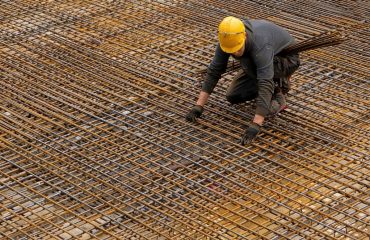Threaded pipes have been a cornerstone of plumbing and industrial applications for centuries. Their enduring popularity stems from their robust design, ease of installation, and reliable performance. This comprehensive guide will delve into the key features and advantages of threaded pipes, showcasing why they remain a preferred choice for numerous projects, from residential plumbing to large-scale industrial installations.
The Mechanics of Threaded Pipe Connections: A Closer Look
The fundamental advantage of threaded pipe lies in its connection method. Unlike other pipe joining techniques, threaded pipes utilize male and female threads that are precisely cut into the pipe ends. These threads, when screwed together, create a mechanically strong and leak-resistant seal. The tighter the threads are engaged, the stronger and more leak-proof the connection becomes. Different thread types exist, such as NPT (National Pipe Taper) and BSP (British Standard Pipe), each with its specific dimensions and applications. Understanding the type of thread is crucial for ensuring compatibility and a secure connection.
The tapered nature of NPT threads, for example, contributes significantly to their leak-resistance. As the threads engage, the taper creates a self-sealing effect, compressing the pipe material and creating a tight fit that prevents leaks. This self-sealing capability is particularly important in high-pressure applications where leaks could be catastrophic.
Superior Strength and Durability: Built to Last
Threaded pipes are known for their exceptional strength and durability. The threaded connection itself adds to the overall structural integrity of the piping system. This is especially important in applications where the pipes are subjected to significant stress, such as underground pipelines or high-pressure systems. The strength of the pipe material, often steel, galvanized steel, or other robust materials, further contributes to its longevity and resistance to damage.
Compared to other joining methods, threaded connections offer a greater resistance to vibrations and shocks. This makes them ideal for applications in environments prone to seismic activity or heavy machinery operation. The inherent strength of the threaded joint minimizes the risk of leaks or pipe failure under such conditions.
Ease of Installation and Maintenance: Simplified Processes
The simplicity of installing threaded pipes is a significant advantage. Unlike welding or other complex joining methods, threading requires only basic tools, making installation quick and efficient. This reduces labor costs and project timelines. Furthermore, the threaded connection can be easily disassembled and reassembled, simplifying maintenance and repairs. A leaking joint can be quickly addressed by simply unscrewing the threaded connection, replacing any damaged components, and reassembling the joint.
This ease of maintenance is particularly beneficial in applications where access to the piping system might be limited or challenging. The ability to easily disconnect and reconnect sections of pipe significantly reduces downtime and simplifies repair processes.
Versatile Applications Across Industries: A Wide Range of Uses
The versatility of threaded pipes makes them suitable for a wide range of applications across various industries. They are commonly used in plumbing systems for residential, commercial, and industrial buildings. In industrial settings, threaded pipes are essential in conveying fluids, gases, and other substances in chemical processing plants, refineries, and manufacturing facilities. Their ability to withstand high pressures and temperatures makes them ideal for demanding industrial applications.
Furthermore, threaded pipes are used in various other applications, including fire protection systems, gas distribution networks, and irrigation systems. Their adaptability to different pipe materials and thread types allows for seamless integration into a wide variety of systems.
Cost-Effectiveness and Long-Term Value: A Smart Investment
While the initial cost of threaded pipes might seem comparable to other pipe types, the long-term value and cost-effectiveness are undeniable. Their durability and resistance to damage translate into reduced maintenance and repair costs over the lifespan of the system. The ease of installation also contributes to lower labor costs, further enhancing the overall economic benefits. The reliable performance and longevity of threaded pipes make them a smart investment for both short-term and long-term projects.
Considering the potential for costly leaks and repairs with other pipe systems, the inherent reliability of threaded pipes offers significant peace of mind and long-term cost savings. This makes them a financially prudent choice for a wide range of applications.
In conclusion, threaded pipes offer a compelling combination of strength, reliability, and ease of installation. Their versatility and cost-effectiveness make them a preferred choice across numerous industries. Understanding their features and advantages is crucial for selecting the right piping system for any project, ensuring optimal performance and longevity.
Tags: threaded pipes, pipe fittings, NPT threads, BSP threads, plumbing, industrial pipes, pipe connections, pipe installation, pipe repair




